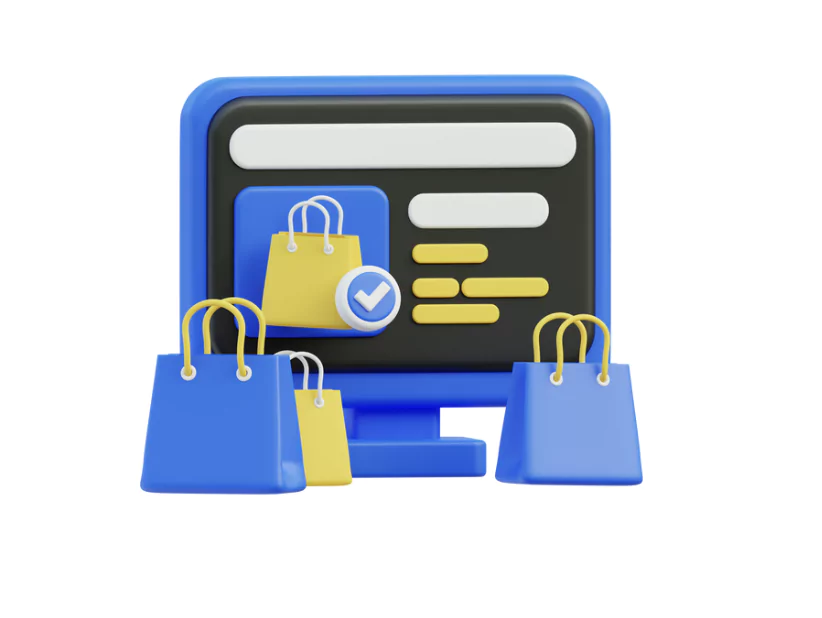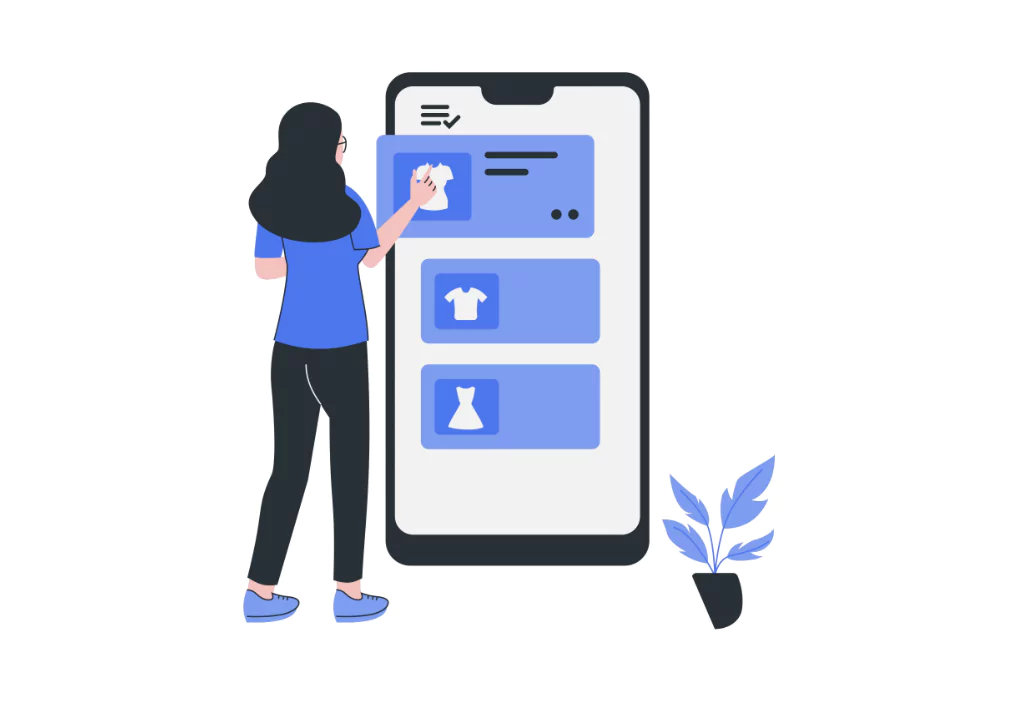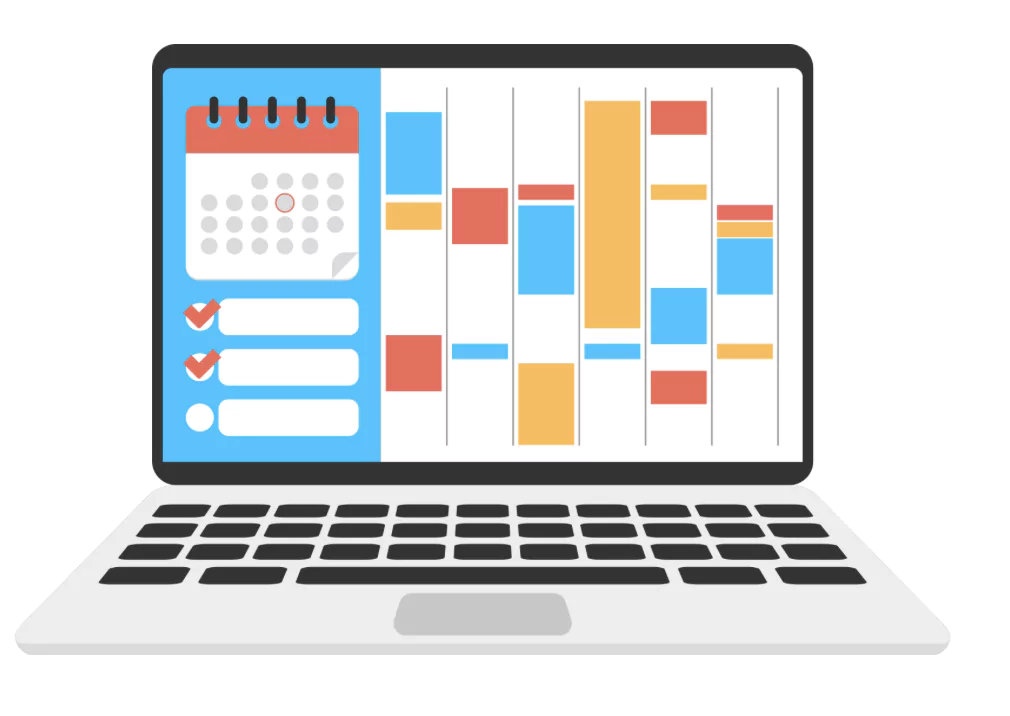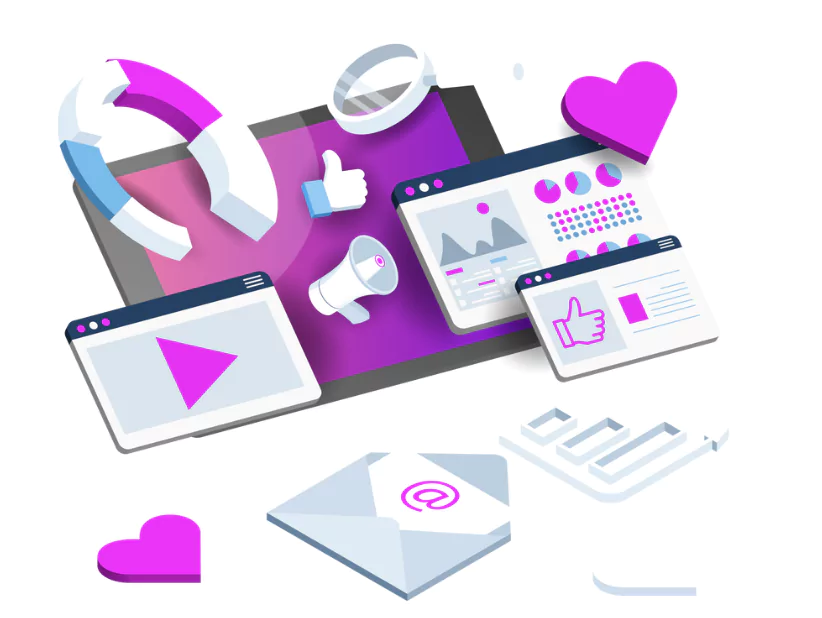Out of every means possible digital products play a crucial role in every field. Our life totally depends on these digital products for our day to day work such as design assets, audio templates, printable files, ebooks, web applications, and more. With smart digital alternatives like SaaS, e-trade websites, cloud platforms, and more you can connect with anyone from any place possible.
Digital product development revolves around software products or tools which can help solve real problems of users. In this blog we will understand the role of digital products in development of a market fit product.
What is Digital Product Development
Digital Product development is a method of ensuring successful product user experience completely covered by Digital products like mobile applications, web pages, web applications, social platforms, and more. Digital products can help in improving the effectiveness and productivity of a product development journey.

Digital products are software programs or applications that resolve or solve problems of a specific group of people using the smart digital functionalities. Some of the popular digital products include internet applications, mobile applications, SaaS applications, E-learning portals, cloud based infrastructure, and more.
Read More: How to Become a Digital Marketer? Step-by-Step Guide and Tips for Beginners
Objective of Digital Product Development
Digital product development offers seamless, user focused digital solutions such as websites, applications, platforms, and more used to solve real problems and drive business growth.
The goal is not to just use functional technology, but to deliver digital products that are scalable, intuitive, and aligned with the customer needs and demands in the market. It combines design, technology, strategy for implementation to enhance user experience and improve efficiency.
With growing digitalization, client expectations are evolving unexpectedly. groups that invest in digital product development advantage numerous aggressive advantages:
- Scalability: digital merchandise can scale with minimum incremental prices.
- Customer reach: They allow groups to attain a worldwide audience 24/7.
- Facts Insights: products can accumulate information to understand person conduct and enhance over time.
- Automation: Many digital solutions reduce the need for guide operations.
Virtual product development is now not a luxury rather it is now a necessity for business boom and sustainability.
Read More: Product Development Strategy: How To Create A Winning Strategy
Benefits of Digital Product Development

Some of the major advantages of using digital product development are mentioned below.
1. Faster Time to Market
Digital product development allows businesses to rapidly turn their ideas into functioning products, helping them enter the market faster than traditional methods. Workflow and delivery commitments improve due to the productivity and convenience offered by digital products
With agile workflows, iterative testing, and modern development tools, teams can quickly build, launch, and adapt their products based on real-time feedback. This speed gives companies a competitive edge and helps them respond swiftly to emerging customer needs or market trends.
2. Cost Efficiency
You can use lean methodologies and product development cost significantly reduces. Teams can test ideas through prototypes or ready products easily before committing to full-scale production or launch.
This minimises the risk of investing in a product that might not succeed. Automation, cloud services, and digital collaboration platforms also reduce overhead and streamline workflows, allowing businesses to do more with less.
3. Enhanced User Experience
Digital products are designed with user needs at the center. With tools like user research, UX/UI design, and real-time analytics, businesses can create seamless, engaging experiences that keep users satisfied and loyal.
A well-designed digital product not only solves problems but also delights users, which is critical for retention and long-term success.
4. Scalability
Digital products can easily scale to accommodate growing user bases or expanding features. Unlike physical products, updates and improvements can be made through simple software changes or cloud infrastructure upgrades.
This makes it possible to start small and evolve the product as the business grows without needing to rebuild everything from scratch.
5. Data-Driven Insights
Insights with real time data and analysis based on user behaviors is now more accessible than ever. Organisations can easily track how people use their product, where they drop off, and what features they engage with the most.
These insights guide future improvements, marketing strategies, and even help predict customer needs, making the product more effective over time.
6. Improved Collaboration and Innovation
Digital product development encourages cross-functional collaboration between designers, developers, marketers, and stakeholders through shared platforms and agile tools.
This environment not only improves productivity but also fosters innovation, as ideas are tested and iterated quickly. The digital space gives teams the flexibility to experiment, fail fast, and find better solutions efficiently.
7. Better Customer Engagement
Digital products often include features like notifications, chat support, personalized recommendations, and interactive dashboards that keep users engaged.
These touchpoints help maintain regular communication with users, encourage repeat use, and create opportunities for upselling or cross-selling leading to better customer relationships and increased lifetime value.
How Business Can Get Benefits from Digital Product Development?
Digital product development provides an effective and flexible way to solve users’ problems and create better overall user experience. Using digital tools and technologies you can easily track progress, monitor revenues, collect feedback, provide solutions, collect insights, and more.
You can easily conduct quick prototyping and testing of products speeding up the development process in response to the high market demands. You do not have any physical or geographical barrier for accessing any service through digital platforms. They are highly scalable and offer data driven insights for improvements.

You can continuously make updates in your product to fill the functionality gap and remain competitive in the market. With digital products your inventory or setup cost decreases significantly. The frequent gaps due to product delivery delays is reduce with faster time to market allowing business to gain more projects and opportunities in hand.
Important stages of Digital Product Development
Here, developing a digital product involves numerous properly-defined stages. Each level plays a critical position in making sure the product is useful, user-friendly, and marketplace-prepared.
1. Ideation Phase
At this stage the product development journey starts where you have to figure out the pain point with market research, aggressive evaluations and surveys. This stage is important because here you have to decide the major issues faced by a specific number of people and decide the solution along with the product you will prefer.
- What are we fixing?
- Which is our marketplace?
- Which is our audience?
2. Marketplace studies and Validation
It is important that you do thorough research about your marketplace which is suitable for your product disbursement. You need to examine market tendencies, competitors profile, service, and consider all important metrics to create a cost proposition.
You can use various digital product tools like SEMRush, Google trends, and more to get the real time insights. Also, validate that the product demand is in the market and can generate revenues for the organisation in the long run.
Read More: Different Product Development Methodologies You Need To Know
3. Defining necessities
This is the most phase of your digital product development which is finalising the capabilities of your end product. You can create a product requirement report to highlight the important functionalities you need in your product along with an outline of MVP (Minimum Feasible Product). A nicely-structured product roadmap keeps the improvement crew aligned and focused. You can use tools
5. Development Phase
As soon as the structure and functionalities of a product are decided, the product is moved ahead to the development stage where we use advanced frontend and backend frameworks to develop products using agile methodologies that are more preferred for flexibility, effectiveness, and better results.
CI/CD Pipelines, DevOps, Control structure using git, and many other advanced strategies are kept in place to ensure performance, safety and scalability.
6. Testing Phase
Before the final launch product is carefully examined with automated testing including unit and functionality testing. Make sure the product provides the solution to problems for which it is being developed. Make sure the performance is up to the mark and guarantees error less experience for users.
7. Deployment Phase
After successfully completing the testing phase now its time for deployment which can also be completed using advanced cloud infrastructures and databases. Make sure you release the product in the market especially to your target audience.
Future of Digital Product Development
The future of digital product development is taking a rapid pace with smart AI intelligence already in the market offering high automation and productivity. In the coming years AI, Automation, machine learning and other technologies can accelerate product development life cycle and make it faster and more efficient.

Cloud computing, edge computing, and other technologies are set to dominate the digital market. No code platforms are set to take the place of complex coding applications. With time sustainability of a product will matter more and become a key concern pushing companies to facilitate energy efficient digital solutions. Remote collaboration will become more advanced with more advanced cutting edge technologies.
Also Read:
Learn Product Management With PW Skills
Become a master in Product management and boost your productivity 10x times with PW Skills Generative AI powered Product Management Course. This course is especially tailored for individuals who want to explore diverse opportunities in product management. Get in-depth tutorials, case studies, industry mentors, and more.
Build your career with a wide range of opportunities from complete career assistance with module assignments, quizzes and more to help you strengthen your concepts of product management. This product management Course will also offer industry recognized certifications after you complete the course.
Digital Product Development FAQs
Q1. What are digital products?
Ans: Digital products are software programs or applications that resolve or solve problems of a specific group of people using the smart digital functionalities.
Q2. What is digital product development?
Ans: Digital Product development is a method of ensuring successful product user experience completely covered by Digital products like mobile applications, web pages, web applications, social platforms, and more.
Q3. What are some examples of digital products?
Ans: Some of the popular examples of digital products are design assets, audio templates, printable files, ebooks, and more.
Q4. Is Ola a digital product?
Ans: Ola, Uber, Rapido and any other mobile or web applications can be considered as a digital product which makes our life easy and accessible.

